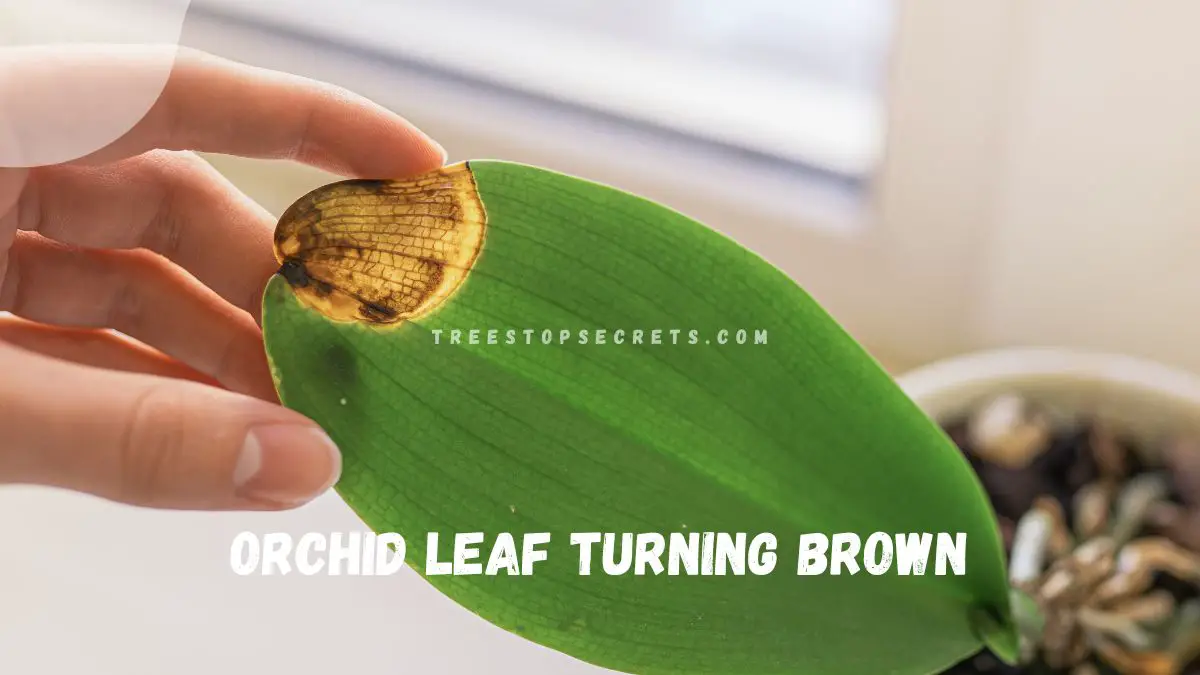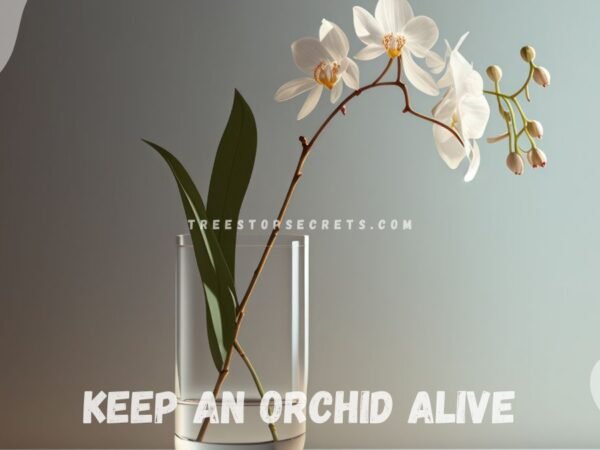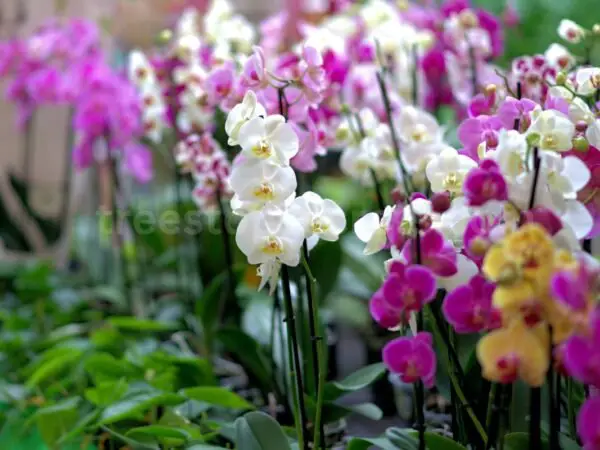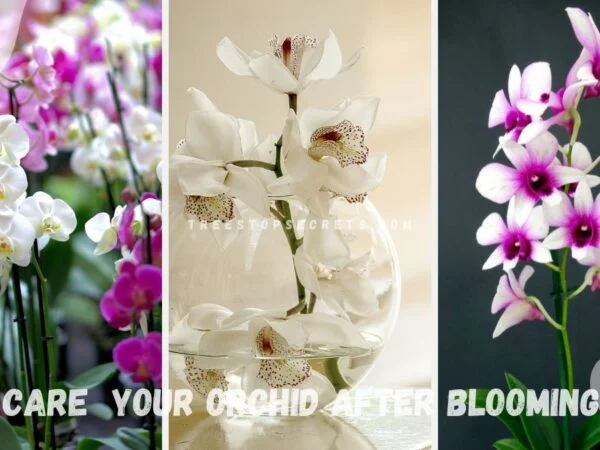Discovering your orchid's leaves turning brown can be alarming, but understanding the underlying causes can help you revive your plant's health. From overwatering to inadequate light exposure, various factors can contribute to this issue. By identifying and addressing these factors promptly, you can prevent further damage and promote your orchid's well-being. Stay tuned as we delve into the issue of your orchid's browning leaves, provide practical solutions, and offer tips on water use to rejuvenate your beloved plant.
Key Takeaways
- Recognize unhealthy orchid leaves: Identify brown leaves as a sign of distress in orchids.
- Adjust watering practices: Ensure proper watering by allowing the medium to dry between watering sessions.
- Optimize orchid environment: Provide adequate light and humidity levels for healthy orchid growth.
- Prevent damage: Avoid direct sunlight, extreme temperatures, and drafts that can harm orchid leaves.
- Manage disease and pests: Monitor for pests and diseases regularly to prevent damage to orchid leaves.
- Implement recovery solutions: Take action promptly by trimming damaged leaves and providing appropriate care for orchid leaf recovery.
Recognizing Unhealthy Orchid Leaves
Signs of Distress
Yellowing leaves may indicate over-watering or low temperatures affecting the orchid's health. Dark green leaves signal insufficient light, hindering the plant's growth. Limp, wrinkled, or torn leaves are signs of dehydration in the orchid, indicating a lack of water.
Wrinkled Leaves
Wrinkled leaves can be caused by bacterial infections, water issues, inadequate sunlight, or nutrient deficiencies. Acting promptly upon noticing wrinkled leaves is crucial to improve the orchid's overall health. Consider wrinkled leaves as a clear indication of underlying plant care problems.
Correct Watering Signs
Over-watering can result in brown, mushy, or rotted roots in orchids. Under-watering may lead to dry, brittle, or shrunken roots, impacting the plant's vitality. Proper watering practices are essential for maintaining the optimal health of your orchid.
Causes of Brown Leaves
Watering Issues
Over-watering can lead to root rot, affecting the orchid's health and causing brownish streaks on the leaves. On the other hand, under-watering results in dry, crispy leaves and stunts root growth.
Finding the right balance in watering practices is crucial for maintaining optimal root health and leaf condition. Avoid letting the roots sit in soggy soil, as this can cause irreparable damage.
Temperature Impact
Orchids thrive in temperatures between 18-30 degrees Celsius. Extreme temperatures stress the plant, manifesting as brown spots on the leaves. Ensure consistent temperatures to prevent leaf damage.
Exposure to temperature extremes can harm orchids, leading to brownish streaks and discoloration on the leaves. Protect your orchid by keeping it away from drafts or heat sources.
Sunlight Exposure
Excessive direct sunlight can scorch orchid leaves, resulting in brownish streaks and burnt spots. Position your orchid in a location with filtered light to avoid leaf damage.
Burned leaves with discolored spots indicate that the orchid is receiving too much sunlight. Adjust its placement to provide adequate light without causing harm to the leaves.
Disease and Pests
Watch out for common orchid diseases like fungal infections or bacterial issues that can cause brown patches on the leaves. Treat these promptly to prevent further damage.
Implement pest control measures to protect your orchid from invaders like aphids or spider mites. Regularly inspect your plant for any signs of pests and take action immediately.
Adjusting Watering Practices
Over vs Underwatering
Over-watering manifests as soggy, yellowing leaves and root rot, harming the orchid's health. In contrast, under-watering results in dry, crispy leaves and shriveled roots. Improper watering impacts root health and leaf condition significantly, affecting the plant's overall well-being.
Adjust watering practices by observing the orchid's response to watering frequency. Ensure the potting mix is well-draining to prevent water accumulation that could lead to root suffocation. By finding the right balance, you can help your orchid thrive and avoid issues like brown leaves.
Water Quality
Water quality is crucial for maintaining orchid health as contaminants can harm the plant. Ensure the water used for watering is clean and free from chemicals or impurities. Poor water quality can hinder nutrient absorption, leading to stunted growth and unhealthy leaves.
Monitor the effects of water quality by observing any changes in leaf color, texture, or growth patterns. Consider using distilled or rainwater for watering to provide your orchid with the best possible conditions for growth and vitality. High-quality water is essential for a healthy orchid environment.
Humidity Needs
Orchids require optimal humidity levels to thrive, typically between 50-70%. Inadequate humidity can cause issues like dehydrated leaves or mold growth. Create a humid environment by placing a tray of water near the orchid or using a humidifier to maintain moisture levels.
Maintain consistent humidity levels by misting the orchid regularly or grouping it with other plants to increase ambient moisture. Monitoring humidity levels is crucial to prevent browning leaves due to dry air. Adequate humidity supports healthy growth and vibrant blooms in your orchid.
Orchid Environment Optimization
Ideal Temperature
Maintain a temperature range between 18-30 degrees Celsius to promote optimal orchid development. Mimic natural habitat conditions by regulating indoor temperatures. Prevent stress by avoiding extreme temperature fluctuations.
Sunlight Requirements
Determine the appropriate amount of sunlight for healthy orchid growth. Strike a balance between light exposure and shade to prevent leaf damage. Adjust sunlight exposure based on the orchid's specific needs.
Nutrient Needs
Understand the essential nutrients crucial for orchid growth. Use balanced fertilizer to meet nutritional requirements. Monitor nutrient intake for optimal health and blooming.
Preventing Damage
Cold Protection
Protect your orchids from cold temperatures to avoid damage to the plant. Shield them from frost and chilly drafts by maintaining a warm and stable environment. This will help prevent any root damage caused by extreme cold.
Fertilizer Use
Supplement your orchid's nutrient requirements with appropriate fertilizers. Follow a schedule to ensure healthy growth and blooming. Be cautious not to over-fertilize, as this can disrupt nutrient balance and harm the plant.
Sunscald Prevention
Shield your orchids from excessive sunlight exposure to prevent sunscald. Utilize shading techniques to protect the leaves from sun damage. Regularly monitor how your orchid responds to sunlight to address any potential sunscald issues effectively.
Disease and Pest Management
Fungal Issues
Fungal problems are common among orchids, manifesting as brown spots on leaves or stems. To prevent fungal infections, ensure proper ventilation and avoid overwatering. Applying a fungicide can help combat fungal issues effectively.
When addressing fungal problems, it is crucial to act swiftly to contain the spread of infection. Trim affected areas using sterilized tools to prevent further contamination. Isolate infected plants to prevent cross-contamination.
Bacterial Problems
Identifying bacterial infections in orchids is essential to prevent severe damage. Symptoms include soft rot and foul odors emanating from the plant. Immediate action involves removing infected parts and applying a bactericide to halt bacterial growth.
Maintaining good hygiene practices is key to reducing the risk of bacterial problems in orchids. Ensure proper air circulation around plants and avoid excess moisture. Regularly clean pots and tools used for orchid care to minimize bacterial transmission.
Pest Combat
Combatting pests targeting orchids requires vigilance and proactive measures. Common pests such as aphids and spider mites can harm orchids if left unchecked. Inspect plants regularly for pest presence, focusing on the undersides of leaves where pests often hide.
Implementing natural pest control methods like introducing beneficial insects can help keep pest populations in check. Alternatively, use chemical pesticides as a last resort, ensuring they are safe for orchids and applied according to instructions.
Understanding Natural Causes
Aging Process
Orchid leaves, like all living things, undergo an aging process. As orchids age, their leaves may start to turn brown due to natural causes. This browning is normal and signifies the plant's maturity.
Recognizing signs of aging in orchids is essential for proper care. Yellowing leaves or wilting flowers are common indicators of the natural aging process. These changes signal that the orchid is transitioning through its growth cycle.
Accepting the natural cycle of growth and renewal in orchids is crucial for maintaining healthy plants. By understanding and respecting the aging process, you can provide the necessary care and support for your orchids to thrive.
Solutions for Recovery
Watering Adjustments
Adjust watering practices based on the orchid's needs for optimal health and growth. Monitor the orchid's response to gauge effectiveness, ensuring soil moisture levels are maintained. Fine-tune watering frequency and volume accordingly.
Environmental Changes
Be mindful of how environmental shifts can impact orchid health. Adjust care routines promptly in response to seasonal or environmental changes. Prevent stress or damage by closely monitoring the orchid during such transitions.
Disease and Pest Solutions
Address specific disease or pest issues with targeted solutions for orchids. Seek advice from experts or reliable resources to find effective treatments. Restore orchid health by following recommended protocols for disease and pest management.
Closing Thoughts
By recognizing unhealthy orchid leaves, understanding the causes of browning, and implementing proper care techniques, you can optimize your orchid's environment and prevent further damage. Disease and pest management are crucial aspects to consider in your efforts to restore your plant's health. Remember that natural causes can also impact leaf discoloration. By applying the solutions discussed, you can promote your orchid's recovery and ensure its well-being.
Take action today by assessing your orchid's leaves, adjusting watering practices, and creating an optimal environment. By staying proactive and attentive to your plant's needs, you can enjoy vibrant and healthy orchids in your home. Your dedication to proper care will be reflected in the flourishing beauty of your prized orchids.
Frequently Asked Questions
How can I recognize unhealthy orchid leaves?
Unhealthy orchid leaves may show signs like discoloration, browning, yellowing, or wilting. Look for changes in texture, spots, or unusual patterns on the leaves as indicators of poor health.
What are the common causes of brown leaves in orchids?
Brown leaves in orchids can be caused by issues such as overwatering, underwatering, inadequate light exposure, extreme temperatures, nutrient deficiencies, or pests infestation. Identifying the specific cause is crucial for effective treatment.
How can I adjust watering practices to prevent brown leaves on my orchid?
To prevent brown leaves on your orchid, ensure you water it properly by allowing the roots to dry out between watering sessions. Use a well-draining potting mix and consider factors like humidity levels and air circulation when determining watering frequency.
What are some tips for optimizing the environment for my orchids?
Optimize your orchid's environment by providing adequate light levels based on the orchid species, maintaining proper humidity levels, ensuring good air circulation, and protecting the plants from drafts or sudden temperature changes. Consistent environmental conditions promote healthy growth and prevent leaf problems.
How can I effectively manage diseases and pests affecting my orchids?
Regularly inspect your orchids for signs of diseases or pests such as mold, rot, or insects. Treat any issues promptly with appropriate fungicides or insecticides recommended for orchids. Isolate infected plants to prevent further spread and maintain a clean growing environment to minimize disease risks.
Image Source: Paid image from CANVA





